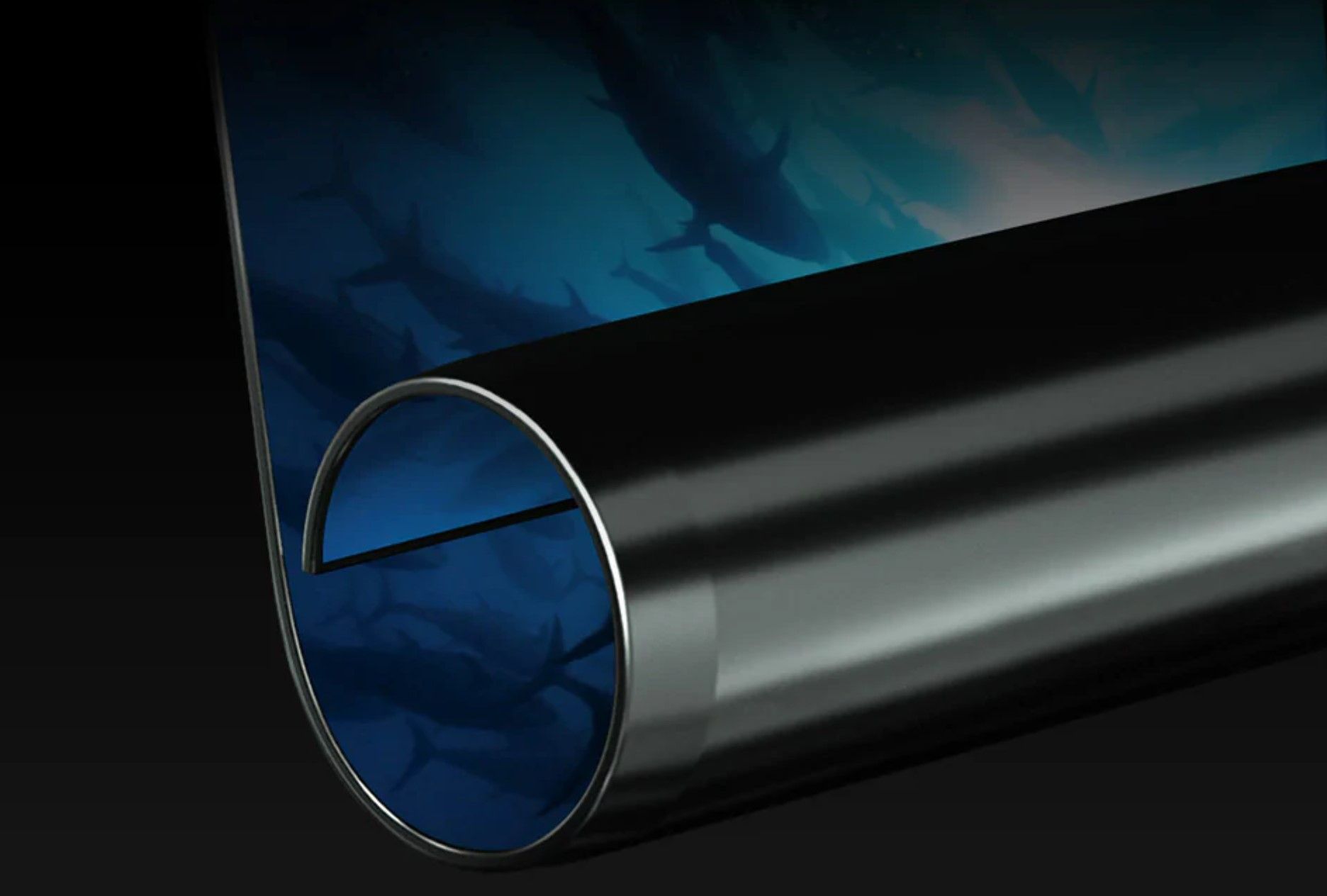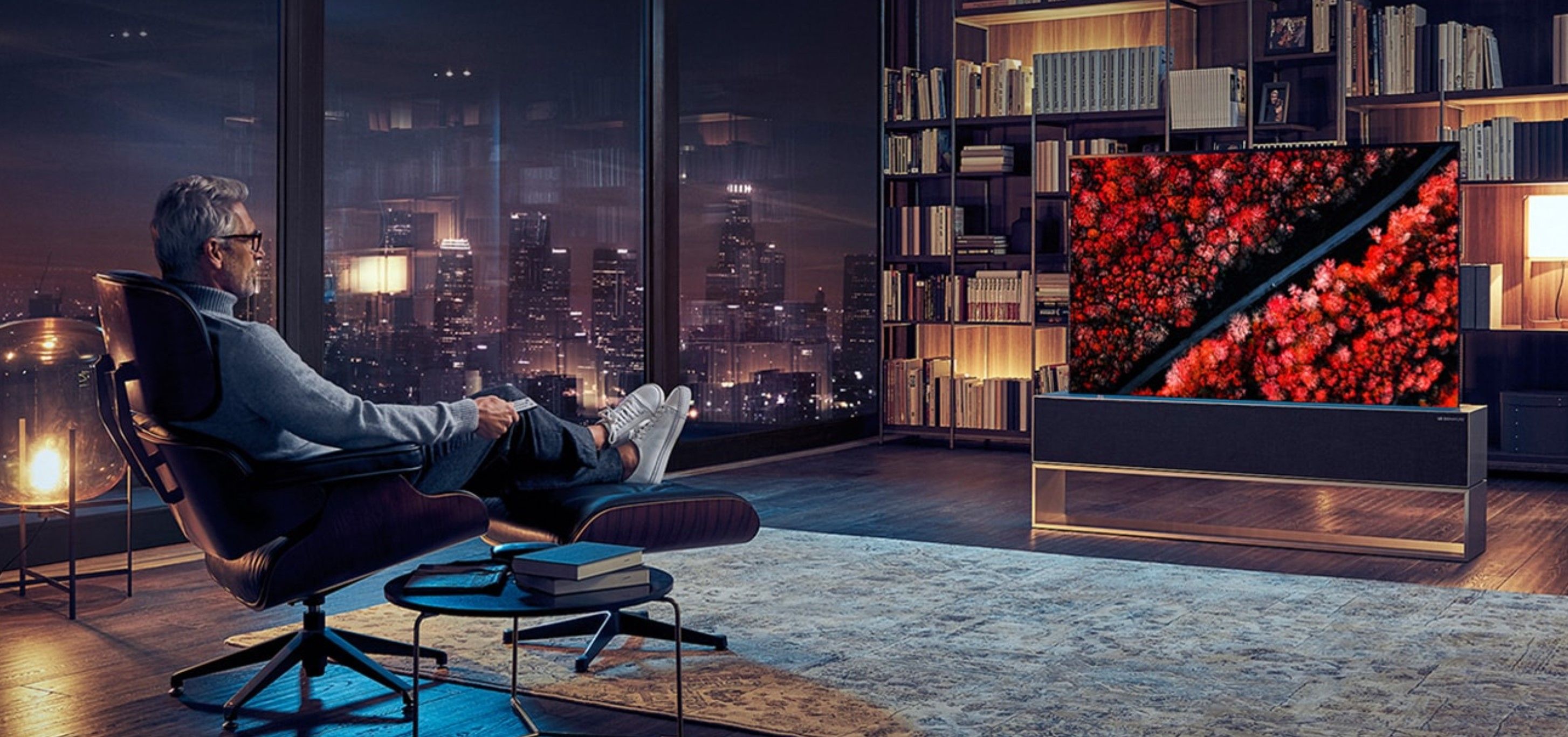The introduction of rollable TVs caught everyone's attention back in 2018. Recently, LG made its rollable TV available in the US, but it's raised questions about its affordability and long-term use.
We're going to discuss how rollable TVs are disrupting the industry, and if you will ever get a chance to have one in your home.
What Are Rollable TVs?
You've likely seen them in movies, or maybe you've been to an expensive home where they had one. Imagine this: you are standing in a bedroom and with one touch of a button, a TV comes up from the ground, seemingly out of nowhere.
This is the general concept of rollable TVs. Instead of a TV being hidden underneath the floor or inside a dresser, rollable TVs literally roll up like a tube.
So instead of using tricks to hide a full-sized TV, the rollable TV fits within the speaker base it comes with.
Rollable TVs use OLED panels, which use organic structure to form pixels that create the images. OLED doesn't require the use of extra backlighting which makes it different from the other types of TVs like QLED and UHD.
How Much Do Rollable TVs Cost?
LG's rollable TV, named the LG Rollable OLED TV R, is estimated to cost anywhere from $90,000 to $160,000.
To purchase the TV in the US, you have to contact LG's sales team because there is no way to purchase one directly on the website. There is also no price listed on the website.
When LG's rollable TV first released in Korea, the sales figures barely reached double-digits. It also took many years for the product to be available outside the country.
It's clear that, at least for the time being, these types of TVs aren't anywhere close to reaching the mass market, just like LG's rollable phone.
Are Rollable TVs the Future?
High price tags will keep the rollable TV in the hands of the wealthy for now, but the question remains: will rollable TVs be in our homes anytime in the near future?
There are parts of the rollable TV that make an attractive option for the average home, but adjustments need to be made before it becomes a reality.
The ability to hide your screen at any time makes it ideal for homeowners who don't want a large screen getting in the way of interior design. That's why most of the promotional pictures involve someone standing in a glass-walled room with uninterrupted views.
The only problem is that to put away your TV, or even turn it off, requires you to go through the process of hiding it inside the speaker. The process takes about 10 seconds to complete.
Also, repairing a folding TV with multiple mechanical parts can be fairly expensive compared to a standard TV that only has one function. On top of that, the warranty for LG's rollable TV is only one year. With the unknown issues in design, durability, and high price tags, one year seems unfair for a TV of this expense.
There is no telling how long it will take for the price to drop for the mass market, or if it will ever drop. While the parts may become cheaper to manufacture, by that point the technology could be outdated, replaced with something better. Or perhaps a competitor will step up and iterate at a cheaper price point.
Rollable TVs Are Here, Yet Aren't Accessible
Whether they become the future of television consumption or they remain in the homes of the wealthy, the tech behind the rollable TV remains exciting. The ability to combine folding glass with OLED panels has created a curiosity that isn't going away anytime soon.



